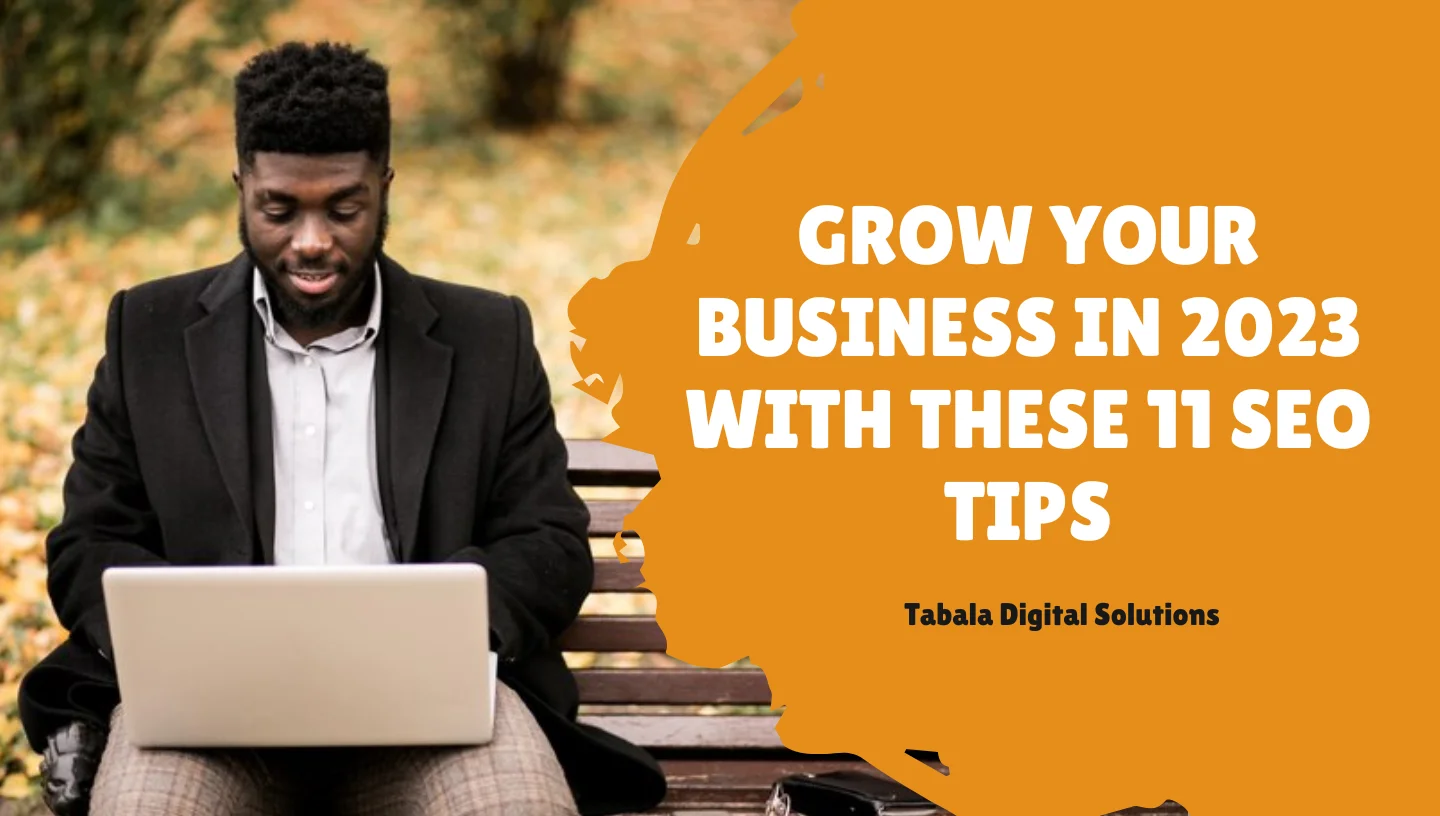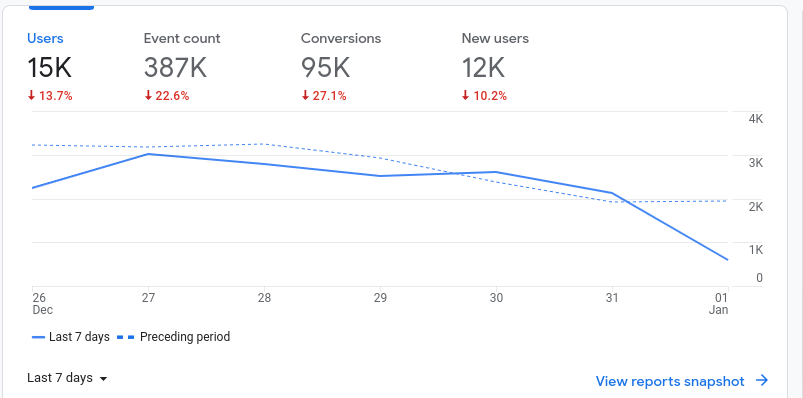Boost Your Business with These 11 Essential SEO Tips - In-depth Analysis

Do you want to drive more customers to your business and stand out online? Mastering Search Engine Optimization (SEO) is key to boosting your website’s visibility and attracting valuable leads. With effective SEO strategies, your business can rank higher on search engines, increasing its reach to potential customers who are actively searching for what you offer.
In this guide, we’ll share 11 essential SEO tips designed to help you grow your business by optimizing both your website and content. These actionable insights cover everything from technical SEO and content creation to best practices that keep your site performing well in search engine results.
Ready to elevate your business and get discovered by more customers? Dive into these expert SEO tips to start boosting your online presence today.
1. Conduct Keyword Research to Target Your Ideal Customers

Keyword research is the foundation of successful SEO. By identifying keywords that match your audience’s search intent, you can optimize your content and attract higher-quality traffic to your site.
Here’s a streamlined approach to effective keyword research for your business:
-
Understand Your Target Audience: Define your ideal customer. What are their needs, pain points, and interests? This insight helps you focus on keywords that align directly with their search behavior.
-
Generate Keyword Ideas: Use tools like Google Keyword Planner, Answer the Public, or SEMrush to compile a list of potential keywords. Look for terms that relate closely to your business offerings and address common questions in your industry.
-
Assess Keyword Competition and Relevance: For each keyword, analyze search volume and competition level. Tools like Ahrefs or SEMrush can help you find keywords with a balance of relevance and rank potential, especially if your site is new or has a lower domain authority.
-
Optimize Content with Targeted Keywords: Once you've identified suitable keywords, integrate them naturally into your content’s title tags, headers, meta descriptions, and throughout the body. Well-placed keywords increase your visibility in search results and attract more targeted visitors to your site.
Remember, keyword research isn’t a one-and-done process. Regularly updating your keyword list based on evolving trends and audience needs ensures your SEO strategy stays fresh and effective.
Maximize Your Online Presence with Our Digital Marketing Agency
-
SEO: Unlock more SEO traffic and see real results with our expert optimization services.
-
Content marketing: Attract and retain customers with high-quality, engaging content that drives traffic and generates leads.
-
Social media marketing: Our team creates epic content that will get shared, get links, and attract traffic on social media platforms.
-
Google Ads: Effective paid strategies with clear ROI. Let our team help you get the most out of your ad spend.
-
Email marketing: Connect with your audience and drive conversions with targeted email campaigns.
-
Web design and development: A visually appealing and user-friendly website is key to attracting and retaining visitors. Our team can help you create a website that converts.
2. Optimize On-Page Elements to Drive More Traffic

On-page SEO optimization is key to improving search rankings, enhancing relevance, and driving targeted traffic to your site. By fine-tuning specific elements on each page, you make it easier for search engines to understand your content and for users to find exactly what they need.
Here are essential on-page elements to optimize:
-
Title Tags: Your title tag appears in search results and browser tabs. Use concise, specific language with your primary keyword. For example, “11 Proven Tips for Growing Your Beards” is better than “Tips to Grow your Beards.” Aim for 50-60 characters to avoid truncation in search results.
-
Headings (H1-H6): Structured headings help organize your content and improve readability. Use H1 for the main page title, and include relevant keywords in H2-H3 tags to guide users and search engines through the content.
-
Meta Descriptions: A well-crafted meta description (up to 160 characters) should highlight your page’s value, incorporate target keywords, and include a call to action, like “Learn essential tips to to grow your business.”
-
URL Structure: Clean, keyword-focused URLs make pages more understandable for search engines and clickable for users. Instead of “www.example.com/p?id=123,” try “www.example.com/11-proven-tips-for-growing-your-beards” for a clearer, more attractive link.
By regularly auditing these on-page elements, you can improve your rankings and attract more relevant, qualified traffic.
Related Resources
The 4 Types Of SEO You Need To Know To Boost Your Site Traffic
What is the role of SEO In Digital Marketing?
3. Create High-Quality Content to Boost SEO and Engage Users
Producing high-quality content is one of the most effective ways to improve search rankings, attract qualified traffic, and establish authority in your industry.

Here’s how to create engaging, optimized content that meets search intent and keeps users coming back:
-
Leverage Keyword Research: Identify the specific terms your audience is searching for. Use these keywords naturally throughout your content, focusing on high-intent phrases relevant to your business.
-
Prioritize Relevance and Value: Craft content that directly addresses your audience’s needs. Offer unique insights, actionable tips, and real-world examples that make your content indispensable.
-
Use Clear Headings and Subheadings: Structure your content with headings (H2, H3) that guide readers and make it easy to scan. Use keywords in headings to improve SEO and highlight each section’s purpose.
-
Enhance Readability: Break up long blocks of text into short paragraphs. Use bullet points and numbered lists to improve readability and create white space that makes your page more visually appealing.
-
Include Engaging Visuals: Images, videos, and infographics capture attention and can boost your page’s SEO value. For instance, use relevant images that illustrate points and consider adding an informative video where possible.
-
Optimize for Readability: Use simple language and a conversational tone to engage readers. Keep sentences concise and avoid jargon to make your content accessible and reader-friendly.
By implementing these strategies, you can create content that ranks well in search results, attracts organic traffic, and resonates with your target audience.
4. Boost SEO with Effective Internal Linking
Internal linking—linking to other pages within your website—is a powerful SEO tool. It not only enhances navigation for users but also helps search engines understand your site’s structure and discover valuable content.

Here’s how to make the most of internal linking:
-
Improve User Navigation: Internal links create a smooth user journey by connecting related content. For example, linking from a blog post to a product page helps users find relevant information and stay engaged on your site longer.
-
Increase Crawlability: Internal links help search engines discover and index pages more efficiently, especially on large sites. By linking to newer or deeper pages, you ensure that all important content is easily accessible to search engines.
-
Distribute Page Authority: Pages with strong SEO value can pass some authority (PageRank) to other linked pages, boosting their potential to rank higher. Linking from high-traffic pages to newer pages can help elevate those pages in search results.
-
Optimize for Keywords: Use anchor text that contains relevant keywords to enhance the linked page’s relevance for those terms. For instance, linking “ Best home cleaning practices” to a detailed guide reinforces its topic and can improve its search rankings.
Best Practices for Internal Linking:
-
Use Descriptive Anchor Text: Choose anchor text that clearly describes the linked page's content to help users and search engines understand the link’s value.
-
Link to Relevant Content: Ensure your links connect to pages that add value to the current page. This reinforces topical relevance and improves user engagement.
-
Maintain a Logical Link Structure: Build a hierarchical link structure that mirrors your site’s architecture, with links pointing from high-level pages (e.g., homepage) to deeper, specific pages (e.g., blog posts or product pages).
By strategically implementing internal links, you can enhance both user experience and SEO performance, helping your content rank better and attract more qualified visitors.
5. Strengthen SEO with Quality Backlinks

Backlinks, or links from other websites to yours, are crucial for improving your site’s authority and search engine ranking. High-quality backlinks signal to search engines that your content is trustworthy, boosting your chances of ranking higher on search engine results pages (SERPs).
Here’s how to effectively build backlinks:
-
Create Shareable Content: Publishing valuable, informative content—like blog posts, infographics, or videos—encourages others to link back to your site. Content that solves problems, provides unique insights, or offers data is more likely to earn quality backlinks.
-
Outreach to Relevant Websites: Identify websites or blogs in your industry and reach out to ask for a link. Personalize your emails to show how your content is relevant to their audience, increasing the likelihood they’ll link to it.
-
Engage in Industry Forums and Communities: Participating in relevant forums or community discussions not only builds connections but can lead to backlink opportunities. By contributing valuable insights, you create a natural way to link to your content when relevant.
-
Collaborate with Industry Influencers: Partner with influencers or reputable websites to create content together, such as guest posts or interviews. This often results in backlinks from their audience and enhances your brand’s credibility.
Backlink Quality Matters: Focus on obtaining links from authoritative, relevant sites rather than accumulating numerous low-quality links. High-quality backlinks have a more significant impact on your SEO and protect you from penalties that can arise from spammy practices.
By following these strategies, you can build a network of quality backlinks that enhance your site’s authority and drive more traffic from search engines.
6. Increase Website Traffic with Social Media
Social media platforms like Facebook, LinkedIn, and X are powerful channels for driving traffic to your website, engaging with your audience, and indirectly supporting your SEO efforts.
Here’s how to leverage social media for SEO:
-
Generate Social Signals: Shares, likes, and comments on social media posts act as “votes of confidence” for search engines, indicating that your content is valuable. This engagement can help improve your content’s ranking on search engine results pages.
-
Increase Brand Mentions: Frequent brand mentions on social media increase your visibility and reinforce brand authority. Even without direct links, mentions can drive traffic and enhance your online reputation.
-
Optimize for Keywords: Use relevant keywords naturally within your social media posts to help users find your content through social platform searches. This also supports your SEO goals by associating your brand with targeted keywords.
-
Support Link Building: Sharing your content on social media increases its exposure and can attract backlinks from interested sites. The more your content is shared, the higher the chances that others will link back to your site, improving its authority.
Remember, while social media contributes to SEO, it works best as part of a well-rounded SEO strategy.
7. Boost SEO and Accessibility with Optimized Alt Tags
Alt tags, also known as "alt attributes" or "alt descriptions," are used to describe the content of an image on a web page. Alt tags are helpful for search engine optimization (SEO) because they provide context for search engines and can help improve a web page's ranking in search results.
Below are some tips on how to use alt tags effectively for SEO:
-
Use descriptive, relevant alt tags that accurately describe the image's content.
-
Include relevant keywords in your alt tags, but avoid keyword stuffing.
-
Keep your alt tags short and concise, ideally less than 125 characters.
-
Use alt tags for all images, even decorative images that do not convey much information.
-
Avoid using the same alt tag for multiple images on the same page.
8. Ensure Your Website is Mobile-Friendly
With most users browsing on smartphones or tablets, a mobile-friendly website is critical for SEO success. Google considers mobile-friendliness a ranking factor, so optimizing for mobile improves both your search ranking and user experience. Here’s how to make your website mobile-friendly:
-
Use Responsive Design: A responsive layout automatically adjusts to fit any screen size, making your website easy to read and navigate on both small and large devices.
-
Design for Mobile Usability: Use clear, readable fonts and appropriately sized buttons. Add white space around content to avoid overcrowding, making your site easier to interact with on a touch screen.
-
Optimize Images and Media: Compress images and use responsive techniques to ensure media loads quickly and looks sharp on mobile devices. Large images can slow down mobile load times, so keep file sizes minimal without sacrificing quality.
9. Improve Your Website’s Loading Speed

Page speed is essential for SEO, as it impacts both user experience and search ranking. A slow website can increase bounce rates, signaling to search engines that users aren’t finding what they need. Use these strategies to boost your loading speed:
-
Optimize Web Pages: Compress images, minimize HTML and CSS files, and reduce external resource calls to keep pages lightweight.
-
Use a Content Delivery Network (CDN): CDNs cache content on servers close to the user’s location, speeding up content delivery for faster load times.
-
Enable Browser Caching: Set expiration dates for static resources like images and CSS. Caching stores these resources on users' devices, reducing load times on return visits.
-
Implement Lazy Loading: Delay loading images and videos until they’re visible on the user’s screen. Lazy loading improves initial page speed and reduces data use.
-
Prioritize “Above the Fold” Content: Load the most important content first—this means the area users see without scrolling. It improves the perceived load time and enhances the initial user experience.
By optimizing mobile usability and page speed, you’ll not only improve your search rankings but also offer a seamless browsing experience that keeps visitors engaged.
10. Boost Local Business with Effective Local SEO Strategies
For businesses targeting specific geographic areas, local SEO is a game-changer. Optimizing your website for local search increases your visibility in local results, making it easier for nearby customers to find and choose your business. Here’s how to implement successful local SEO:
-
Claim and Optimize Your Google Business Profile Listing
Ensure your Google Business Profile is complete and up-to-date. Add accurate business details, including your address, phone number, hours of operation, and photos. An optimized listing helps you appear in local search results and on Google Maps, directly attracting nearby customers. -
Use Location-Specific Keywords
Integrate keywords relevant to your area throughout your content, meta descriptions, and title tags. For example, a "home cleaning comapny in Nairobi" should use terms like "Home cleaning design services in Nairobi" or "Nairobi home cleaning services." This boosts your chances of ranking for local searches. -
Encourage Customer Reviews
Positive reviews from local customers enhance trust and improve local rankings. Encourage customers to leave reviews on platforms like Google, Yelp, and Facebook. These reviews not only impact rankings but also build credibility and influence potential customers. -
Build Local Backlinks
Connect with local organizations, blogs, and directories to gain backlinks. By getting mentions from local sources, you signal to search engines that your business is an integral part of the community, further enhancing your local SEO.
Why Local SEO Matters
By implementing these strategies, you position your business to attract more local traffic, generate leads, and convert nearby prospects into loyal customers. Local SEO ensures that people in your vicinity can find you when they need your services the most.
11. Monitor Your SEO Performance

Tracking your SEO performance is essential for any digital marketing strategy. By monitoring specific metrics, you can assess your efforts, refine your tactics, and boost your search engine ranking. Here are the key metrics to track:
-
Keyword Rankings: Regularly track your website’s ranking for target keywords to measure visibility in search results and see how rankings change over time.
-
Organic Traffic: Measure the volume of visitors coming from search engines. This reveals your website's reach and visibility for organic searches and highlights growth trends.
-
Conversions: Keep track of conversions from search engine traffic, whether they’re leads, sign-ups, or purchases. This shows how effective your SEO is at driving results and bringing qualified traffic to your site.
-
Bounce Rate: Monitor the percentage of visitors who leave after viewing only one page. A high bounce rate may indicate issues with user experience or content relevancy to search queries.
Use tools like Google Analytics and Google Search Console to track these metrics. Analyzing this data regularly helps you understand SEO impact and reveals opportunities for improvement.
Boost Your Business with SEO
Following these 11 essential SEO tips can significantly boost your business. By optimizing for keywords, creating valuable content, improving user experience, and building quality backlinks, you’ll increase visibility in search results and attract qualified traffic.
Remember to track your progress and adjust your SEO strategy regularly to stay ahead of the competition. For expert SEO guidance, contact Tabala Digital Solutions—a leading SEO agency in Nairobi dedicated to helping businesses thrive online.

Published by: Abala Tom
Date: Dec 31, 2022